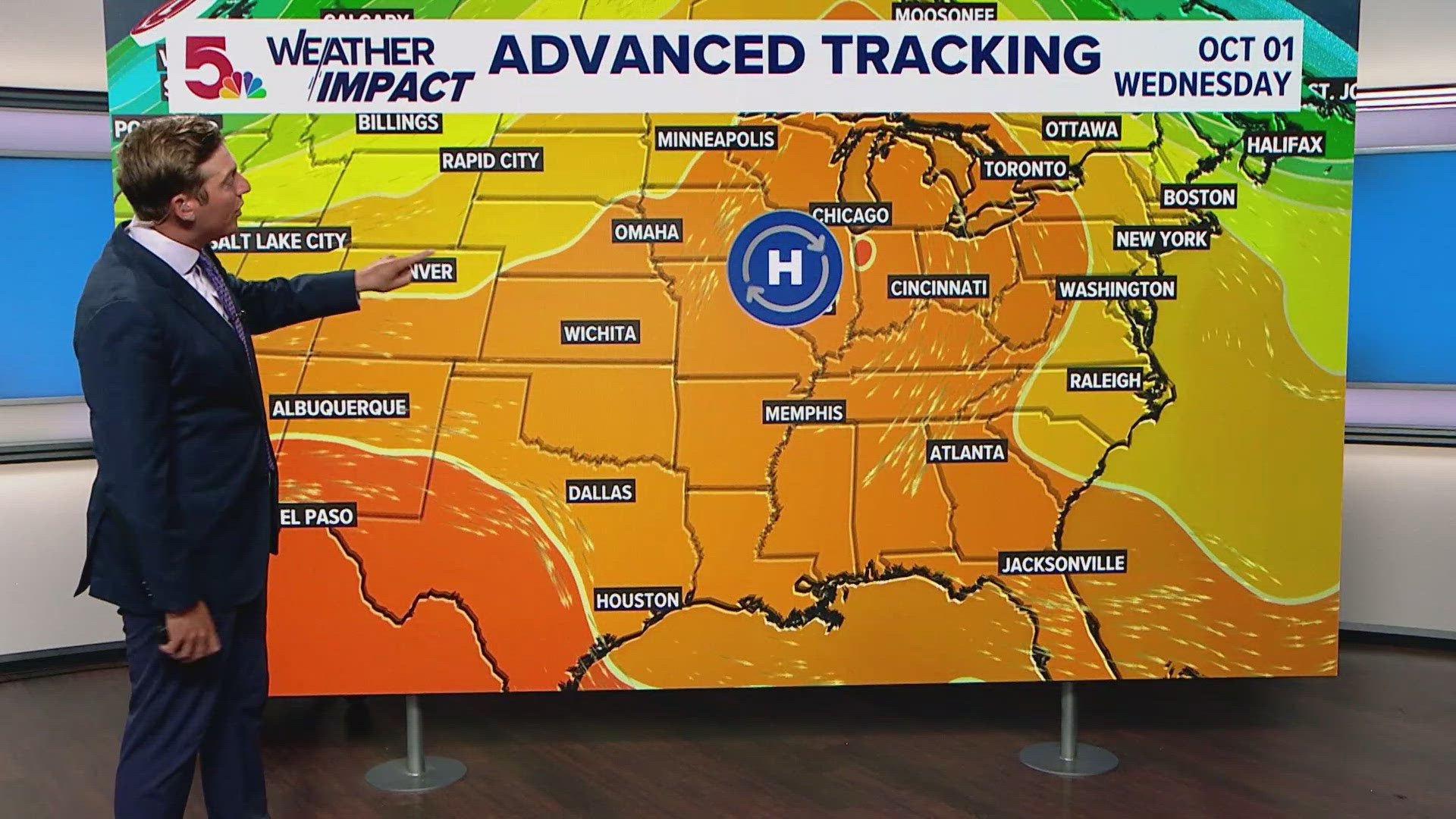
Impact of Climate Change on Allergies and Public Health: A Sustainable Development Perspective
Introduction
Climate change represents not only an environmental challenge but also a significant threat to public health, particularly affecting individuals with food and respiratory allergies. This report highlights the implications of climate change on allergy prevalence and severity, emphasizing the alignment with the United Nations Sustainable Development Goals (SDGs), especially SDG 3 (Good Health and Well-being), SDG 13 (Climate Action), and SDG 11 (Sustainable Cities and Communities).
Climate Change and Respiratory Allergies
Warming temperatures have led to earlier and longer allergy seasons, causing overlapping pollen seasons for trees, grasses, and weeds. This results in increased pollen exposure and exacerbated allergic rhinitis (AR) symptoms. Key findings include:
- Pollen emissions are projected to increase by 16–40% by the end of the century, with pollen seasons extending by up to 19 days.
- Thunderstorm asthma events occur when storms break down pollen into smaller particles, which penetrate deeper into airways, intensifying allergic asthma attacks.
- Increased rain and humidity promote indoor allergens such as mold and dust mites.
- Elevated CO2 levels triple mold spore production and double allergenic protein output, enhancing sensitization risks.
- Certain weeds and grasses, including Bermuda and Johnson grass, are spreading to new regions due to climate-induced growth changes.
These developments underscore the need for climate action (SDG 13) to mitigate health risks associated with environmental changes.
Broader Impacts on Food Allergies and Public Health
Climate change also affects food allergies and overall public health through several mechanisms:
- Expansion of Allergy-Causing Vectors: The lone star tick, responsible for alpha-Gal syndrome (AGS), is expanding its habitat northward and westward due to longer warm seasons.
- Mycotoxigenic Fungi Spread: Increased CO2 levels promote fungi like deoxynivalenol (DON), which impair gut barrier integrity and increase food allergy sensitization, with potential generational effects.
- Air Pollution Effects: Pollutants such as ozone, nitrogen dioxide, and particulate matter damage epithelial barriers in the gut, respiratory tract, and skin, increasing allergen exposure and sensitization.
- Severity of Allergic Conditions: Higher particulate matter levels correlate with increased severity of eosinophilic esophagitis (EoE) symptoms.
These factors highlight the intersection of environmental health and sustainable urban development (SDG 11) to reduce pollution and protect vulnerable populations.
Healthcare System Burden and the Role of Diagnostics
Allergy-related conditions impose a significant burden on healthcare systems globally:
- Approximately 1.1 million emergency room visits annually are associated with allergy conditions.
- In the United States, food allergy-related emergencies occur every 10 seconds.
- The economic cost of childhood food allergies in the U.S. is estimated at $24.8 billion annually, driven by inpatient, outpatient, and emergency department visits.
Effective allergy diagnostics and early identification of triggers are critical for:
- Reducing unnecessary emergency visits and hospitalizations.
- Enabling personalized treatment plans in collaboration with healthcare providers.
- Improving patient quality of life and health outcomes, supporting SDG 3 (Good Health and Well-being).
Healthcare systems must adapt to environmental changes by integrating advanced diagnostic approaches and preventive strategies aligned with sustainable health goals.
Conclusion
Climate change significantly influences the prevalence, severity, and distribution of allergic diseases, posing challenges to public health and healthcare infrastructure. Addressing these issues requires coordinated efforts to:
- Implement climate action policies (SDG 13) to mitigate environmental contributors to allergies.
- Promote sustainable urban planning and pollution reduction (SDG 11) to protect vulnerable populations.
- Enhance healthcare capacity for early diagnosis and management of allergies (SDG 3).
By integrating these strategies, societies can improve resilience against allergy-related health risks and advance sustainable development objectives.
1. Sustainable Development Goals (SDGs) Addressed or Connected
- SDG 3: Good Health and Well-being
- The article focuses on the impact of climate change on public health, specifically respiratory and food allergies, which directly relates to ensuring healthy lives and promoting well-being.
- SDG 13: Climate Action
- The article discusses climate change effects such as rising CO2 levels, longer pollen seasons, and increased pollution, linking environmental changes to health outcomes.
- SDG 11: Sustainable Cities and Communities
- Air pollution and urban environmental factors affecting allergies are mentioned, which relate to making cities inclusive, safe, resilient, and sustainable.
2. Specific Targets Under Those SDGs Identified
- SDG 3: Good Health and Well-being
- Target 3.9: Reduce the number of deaths and illnesses from hazardous chemicals and air, water, and soil pollution and contamination.
- Target 3.8: Achieve universal health coverage, including access to quality essential healthcare services and access to safe, effective, quality, and affordable essential medicines and vaccines.
- SDG 13: Climate Action
- Target 13.1: Strengthen resilience and adaptive capacity to climate-related hazards and natural disasters in all countries.
- Target 13.3: Improve education, awareness-raising, and human and institutional capacity on climate change mitigation, adaptation, impact reduction, and early warning.
- SDG 11: Sustainable Cities and Communities
- Target 11.6: Reduce the adverse per capita environmental impact of cities, including air quality and waste management.
3. Indicators Mentioned or Implied to Measure Progress
- Health-related Indicators (SDG 3)
- Number of emergency room visits related to allergy conditions (1.1 million annually mentioned).
- Prevalence and severity of allergic rhinitis and food allergies in populations.
- Incidence rates of allergy sensitization and clinical allergy cases.
- Economic costs associated with allergy-related healthcare visits.
- Climate-related Indicators (SDG 13)
- Changes in pollen emissions and length of pollen seasons (projected 16–40% rise and up to 19 days longer seasons).
- Levels of CO2 and other air pollutants such as ozone, nitrogen dioxide, and particulate matter.
- Geographical spread and seasonal duration of vectors like the lone star tick.
- Environmental Quality Indicators (SDG 11)
- Air quality measurements including particulate matter concentration.
- Incidence of indoor allergens such as mold and dust mites linked to humidity and rain.
4. Table of SDGs, Targets, and Indicators
| SDGs | Targets | Indicators |
|---|---|---|
| SDG 3: Good Health and Well-being |
|
|
| SDG 13: Climate Action |
|
|
| SDG 11: Sustainable Cities and Communities |
|
|
Source: medcitynews.com







